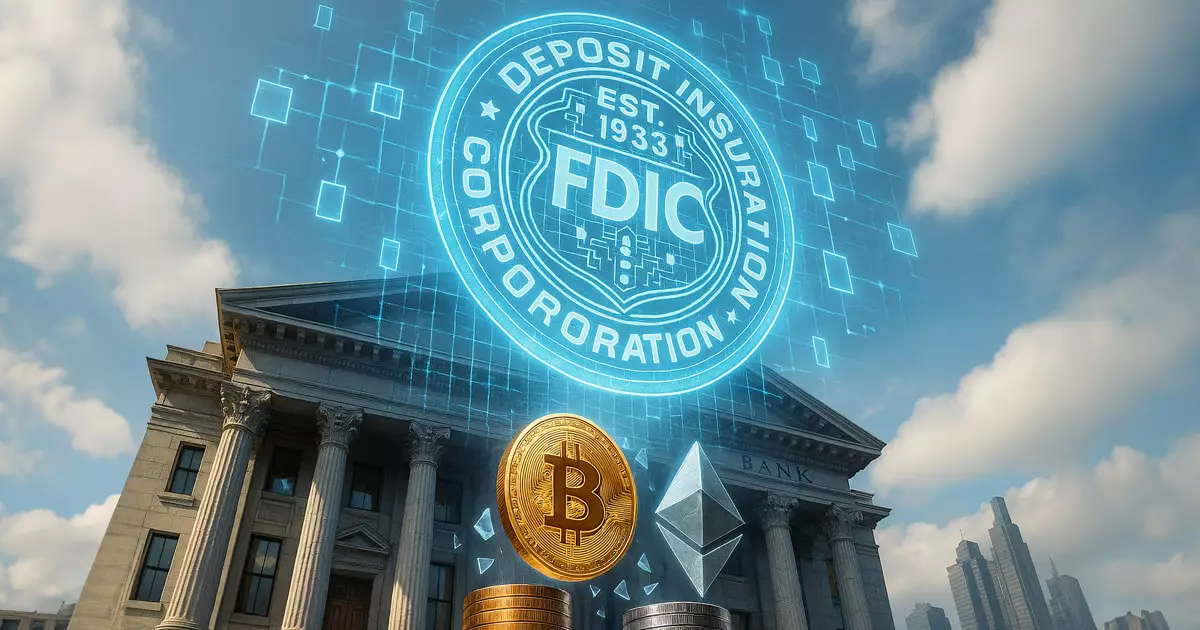The Federal Deposit Insurance Corporation (FDIC) is standing at a precipice. A new era dawns for U.S. banking as the agency, under Acting Chairman Travis Hill, pivots towards a more transparent and lenient approach regarding cryptocurrencies and the use of public blockchains. However, this shift raises stark questions about the balance between fostering innovation and maintaining rigorous financial safeguards. In an age where digital assets promise unfathomable potential, the idea of prioritizing innovation over meticulous regulatory frameworks may prove precarious.
Hill’s recent statements reveal the FDIC’s dissatisfaction with its previous blanket prohibitions on public blockchains. While he acknowledges that international markets have embraced these technologies, he raises a crucial point: can American regulators reconcile the disruptive nature of blockchain with the safety of traditional banking? Without a solid foundation of risk management and oversight, the FDIC’s newly formed policies could unwittingly create an environment ripe for financial instability.
The Complexity of Oversight
This latest regulatory approach sheds light on the intricate challenges that lie ahead. The FDIC is now tasked with determining how to monitor activities that straddle the line between open public networks and permissioned blockchain systems. The intricacies of defining what constitutes a secure, permissioned environment are profound and often entangled with legal ambiguities. Such complexities can lead to a regulatory minefield if not approached with extreme caution.
Moreover, the FDIC’s intention to release further guidance on specific use cases indicates that while they are moving toward innovation, there remains a substantial gap in consistently defining those innovations. Regulatory bodies ought to recognize that while it is vital to promote the adoption of new technologies, it cannot come at the expense of financial security.
Risk Management and Consumer Protection
At the heart of the FDIC’s newfound flexibility is a glaring concern about consumer protection. The potential for liquidity risks and cybersecurity threats must not be minimized, especially as institutions consider the implications of stablecoins and tokenized assets. Hill’s remarks reflect the agency’s willingness to rethink existing regulations surrounding stablecoin reserves, hinting at an evolving regulatory landscape.
However, the notion of widening the scope of permissible activities, without a rigorous framework, is troubling. The financial industry has been burned by insufficient oversight before, leading to economic calamities that reverberated across the global economy. As the FDIC evaluates emerging questions about stablecoin regulation and risks, it should maintain a commitment to enhancing protection mechanisms rather than dismantling them under the guise of innovation.
Tokenization and Traditional Banking
The notion that “deposits are deposits, regardless of the technology” issued by Hill strikes at the very heart of contemporary banking philosophy. It raises essential questions surrounding the compatibility of traditional banking protocols with emerging technologies. Enabling banks to conduct business in a digitized world must come bundled with safeguards and comprehensive exit strategies, particularly in instances of bank failures.
Moreover, there is an implicit risk in allowing for instant access to funds via smart contracts—as seen in Hill’s concerns about withdrawals during a bank’s resolution process. Could the rush to maintain a seamless flow inadvertently expose the banking sector to greater volatility? The FDIC should prioritize establishing protocols that ensure stability rather than succumbing to short-term technological pressures.
The Foreboding Future of Crypto Regulation
As the FDIC sets the stage for new regulatory frameworks around crypto and blockchain technologies, the fine line it treads between innovation and consumer safety becomes all the more crucial. While comments regarding a shift away from requiring notifications for crypto-related activities show a desire for increased flexibility, the agency must remember that the allure of crypto’s innovation comes with inherent volatility and risk.
The FDIC’s cautious expansion into the realm of the digital might facilitate some level of progress, but it is imperative for regulators to assess the long-term implications of their decisions. An overly permissive attitude towards cryptocurrencies without robust safeguards could push the banking system into uncharted waters, with potentially devastating consequences. It is time for the FDIC to adopt a mindset that embraces caution as it ventures bravely into the future of finance.

